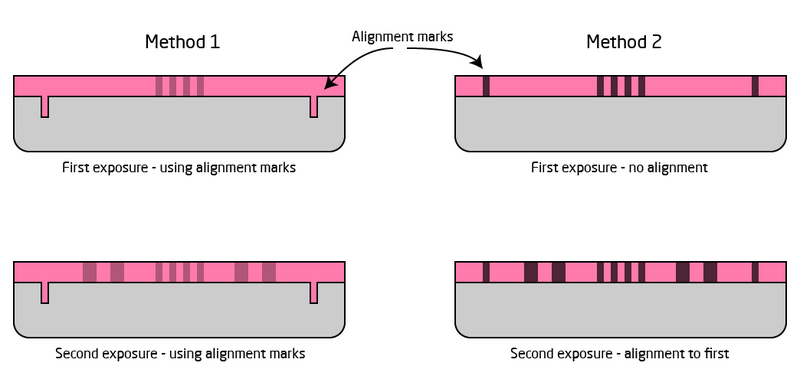Specific Process Knowledge/Lithography/Mix-and-match: Difference between revisions
Appearance
Created page with "Mix-and-match lithography is a process in which two lithography processes are combined to produce a pattern in a single resist layer. In this way one can combine the high resolution of E-beam lithography with the high speed of UV lithography." |
No edit summary |
||
| Line 1: | Line 1: | ||
Mix-and-match lithography is a process in which two lithography processes are combined to produce a pattern in a single resist layer. In this way one can combine the high resolution of E-beam lithography with the high speed of UV lithography. | Mix-and-match lithography is a process in which two lithography processes are combined to produce a pattern in a single resist layer. In this way one can combine the high resolution of E-beam lithography with the high speed of UV lithography. | ||
{| style="border: none; border-spacing: 0; margin: 1em auto; text-align: center;" | |||
|- | |||
| [[image:MixMatch.png|800px]] | |||
|- | |||
| colspan="1" style="text-align: center;| | |||
The two different methods for pattern alignment. Image: Thomas Pedersen. | |||
|} | |||
Revision as of 09:36, 9 October 2023
Mix-and-match lithography is a process in which two lithography processes are combined to produce a pattern in a single resist layer. In this way one can combine the high resolution of E-beam lithography with the high speed of UV lithography.

|
|
The two different methods for pattern alignment. Image: Thomas Pedersen. |
